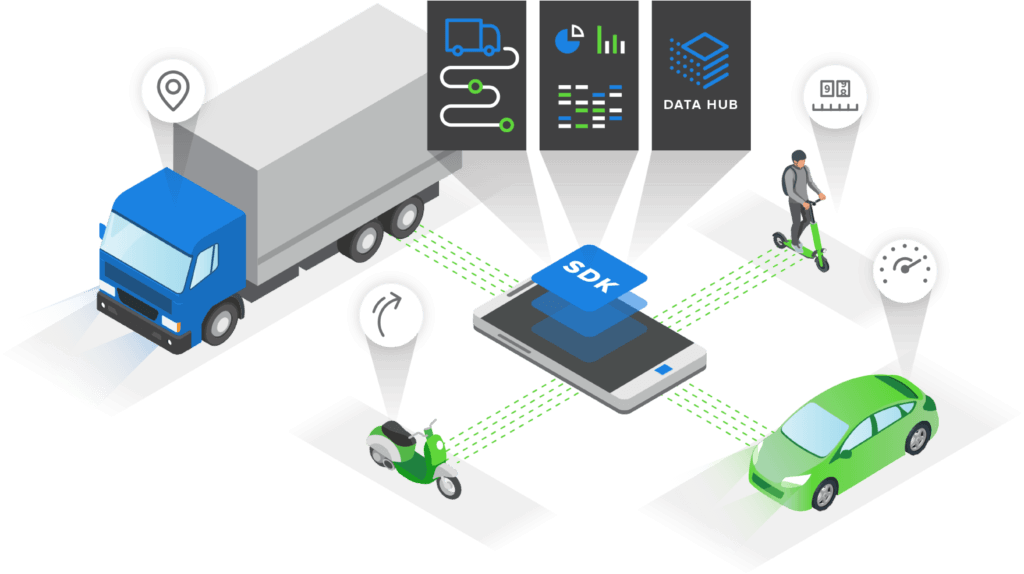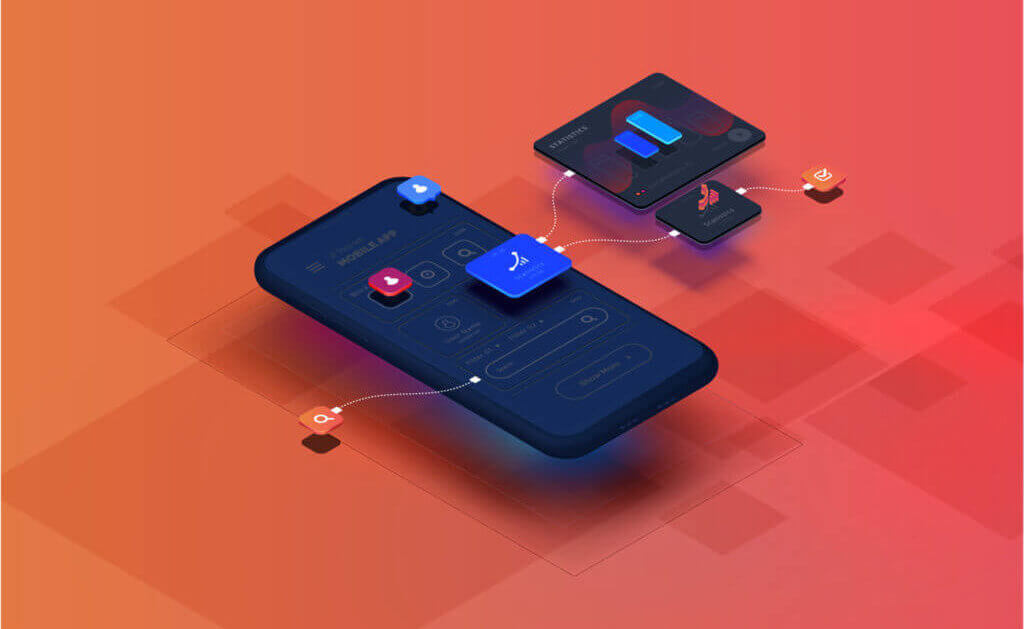Getting Started with Telematics APIs & SDKs
The role of telematics APIs is to collect, process and analyze Telematics data. Consider the case of a simple safe driving app. In this case, the following events are handled by the Telematics APIs;
- Collection: The data on vehicle position at every instance is collected from GPS output.
- Processing: The instantaneous data-points are put together to be able to use for further analysis.
- Analyzing: The processed data is then analyzed using various data models. The analysis could calculate something like “Driving Score”
As a developer, you have the choice to decide for which functions you would want to write custom code and functions for which the data would be available from the Telematics API.
Eventually, your product needs to reside on the user’s smart-phone. To ensure that happens, you need to create and promote an app built on top of your data layer. The app will provide insights to the end user.
So to sum it all up, there are two major stages in the development process of smartphone based telematics apps:
- Creation of the Data Layer
- Building the App to allow user interaction with the data layer.
The toughest way to get this done is to custom code a solution from scratch. The easiest and fastest way to build your own Telematics app is to use Telematics APIs for the Data Layer and Open Source SDKs for the user app.

Getting Started With Telematics APIs
The first step in getting started with Telematics APIs is to choose an API partner. Factors you may want to consider for the selection process could be as follows:
- Available documentation with in-depth coverage of potential used cases
- Data protection & Data Privacy provisions
- Flexibility with respect to Dat Export
- Data integrations options with other platforms
- Partner Case Studies from within your industry
- Available ready to use data-models
Most of the leading Telematics API makers (like Damoov) come armed with detailed Documentation. This documentation should provide you with adequate information and context to get started.
In the case of Damoov, we have API services for the following:
- User Management API
- Vehicle Management API
- Scoring & Statistics API
- Device Status API
- Engagement API
- FNOL & Vehicle Inspection API
As an example, let’s look at the Scoring & Statistics API Services.
This set of services include the following APIs:
- Statistics API
- Safe Score API
- Eco Score API
The statistics API is used for the following:
- Daily & Accumulated Usage Statistics
- Latest trips and scorings data
The safety score API, computes driver safety scores and is useful for safe driving and insurance apps.
The Eco score API, computes the economy of vehicle operation (e.g. Fuel Usage, Wear & tear). It’s useful for the fleet management industry.
Getting started with Telematics SDKs
Open Source Telematics SDKs are useful for getting your user app to market in real quick time. Since the SDKs are open-source, there is no cost involved. The SDK works as a Behavior tracker as well as a real-time GPS tracker.
In the case of Damoov, the data-layer resides on the cloud. The role of SDK is to feed the GPS data to the Damoov platform for analysis & collect the analyzed Data from Damoov to show it to the end user. Damoov provides SDK for iOS, Android, React-Native & Flutter.
Advantages of Building Telematics Apps with APIs & SDKs
The following are the advantages of of building your Telematics App using APIs & SDKs:
- Low Upfront Development Cost: In case of APIs you only need to pay as per usage. On the other hand, open source SDKs are free to use. Thus by using APIs and SDKs for your Telematics Apps, you can bring down the upfront data cost substantially.
- Low time to market: Developing your products using APIs and SDKs can bring down your time to market from years to days. It’s thus advisable to at least use APIs and SDKs to ship out a Telematics app quickly with minimum cost.
- Data Volume: 3rd party telematics APIs are receiving data from multiple clients. Thus, by virtue of having a higher data corpus, these APIs are able to provide more accurate data predictions and insights.
Disadvantages of Building Telematics Apps with APIs & SDKs
The following are the disadvantages of of building your Telematics App using APIs & SDKs:
- Data Privacy Concerns: If you are using 3rd party solutions for analyzing your data, you are essentially sharing the end customer data. This could be considered a breach of privacy, if you don’t have explicit permission to share the same.
- Feature Limitations: Your core features are built & owned by a 3rd party. So, updates to exciting features & creation of new features would be as per the development schedule of the 3rd party. If you have an ambitious product roadmap, it’s better to own the code entirely.
- Cost of Scaling Up: Most APIs are built based on usage volume. Thus, your cost is expected to go up with increased usage.
Useful links
- Company website: https://damoov.com
- Open-source telematics app: https://damoov.com/telematics-app
- Telematics SDK: https://damoov.com/telematics-sdk
- Telematics API: https://damoov.co/api-services
- Developer portal: https://docs.damoov.com
- Datahub: https://app.damoov.comm
- Github: https://github.com/Mobile-Telematics


